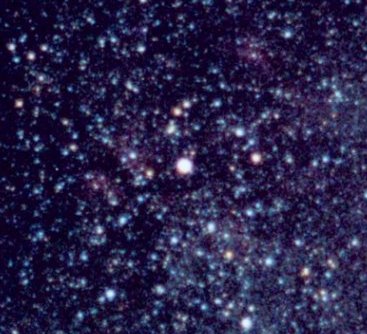
 |
Sadr (at center), in a complex region of the Milky Way, is surrounded by reddish interstellar clouds that are excited to glow by the ultraviolet light of hot stars, IC 1318 up and to the right. Just up and a bit to the left of Sadr is the open cluster NGC 6910, while just to the left of center near the lower edge lies the better known cluster Messier 29. P Cygni is at the lower right edge. See the labelled picture for identifications. |